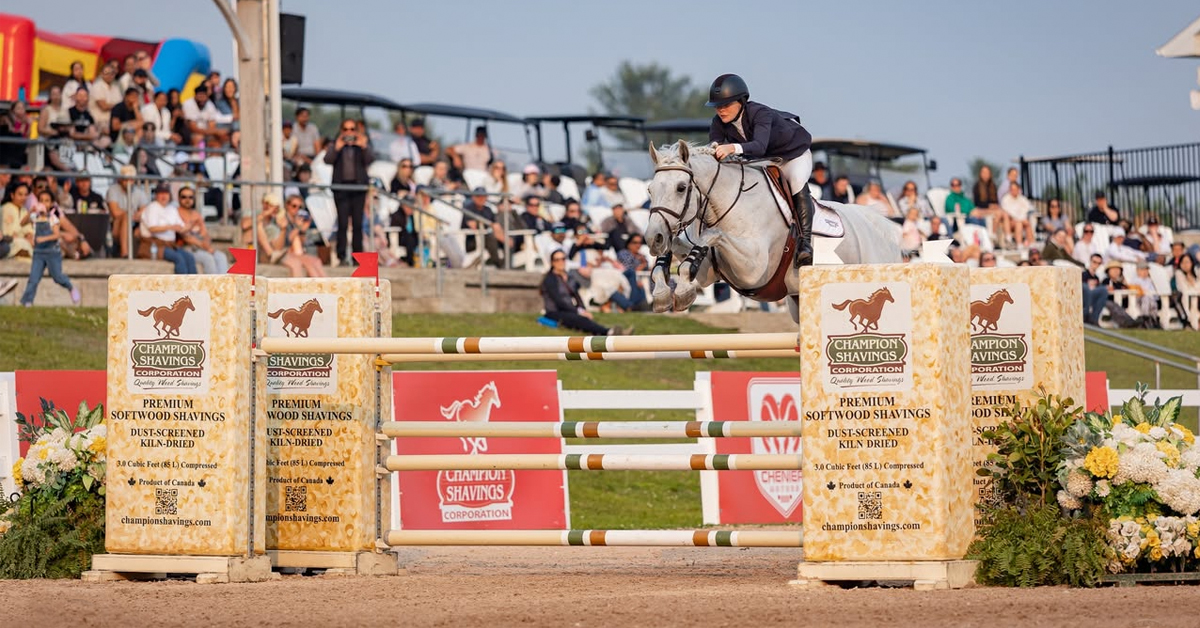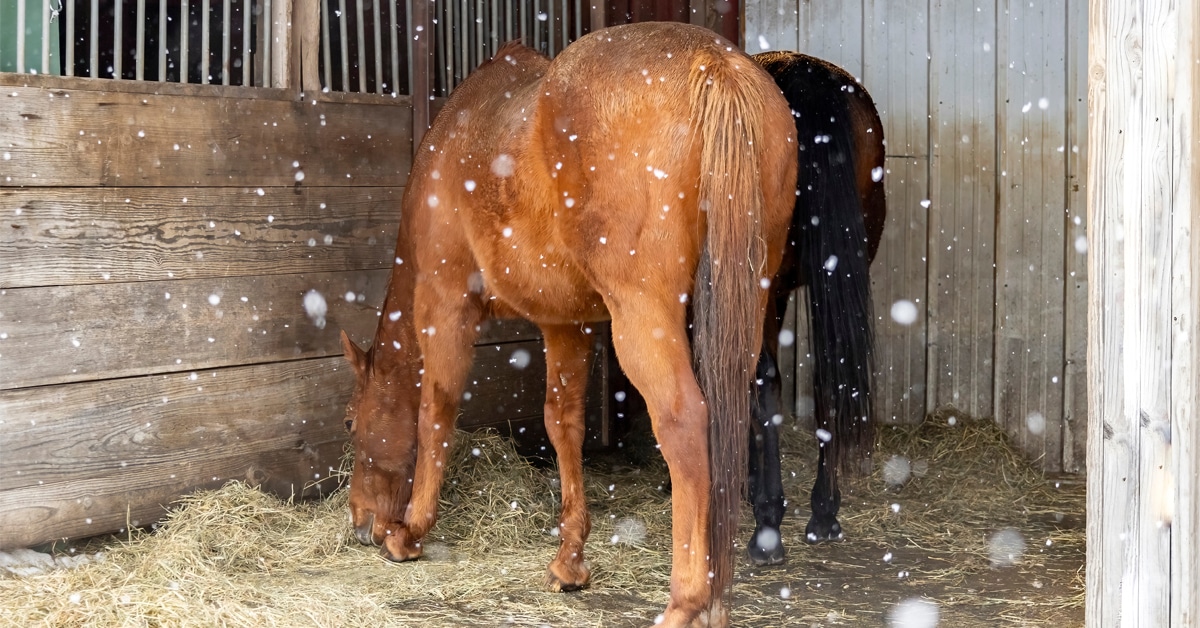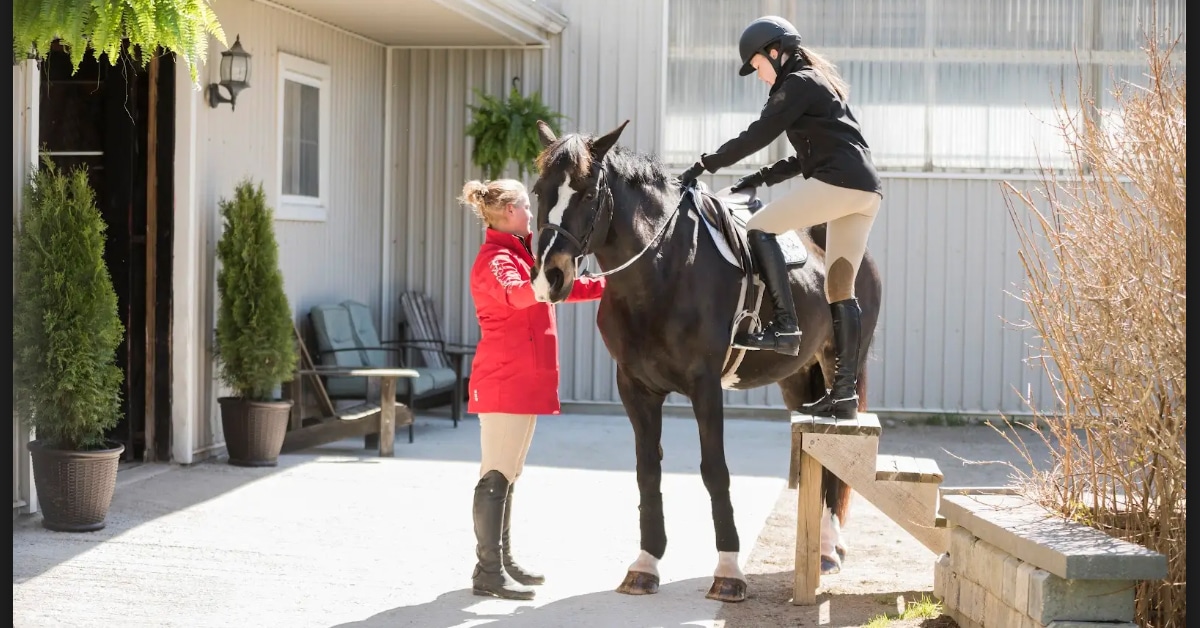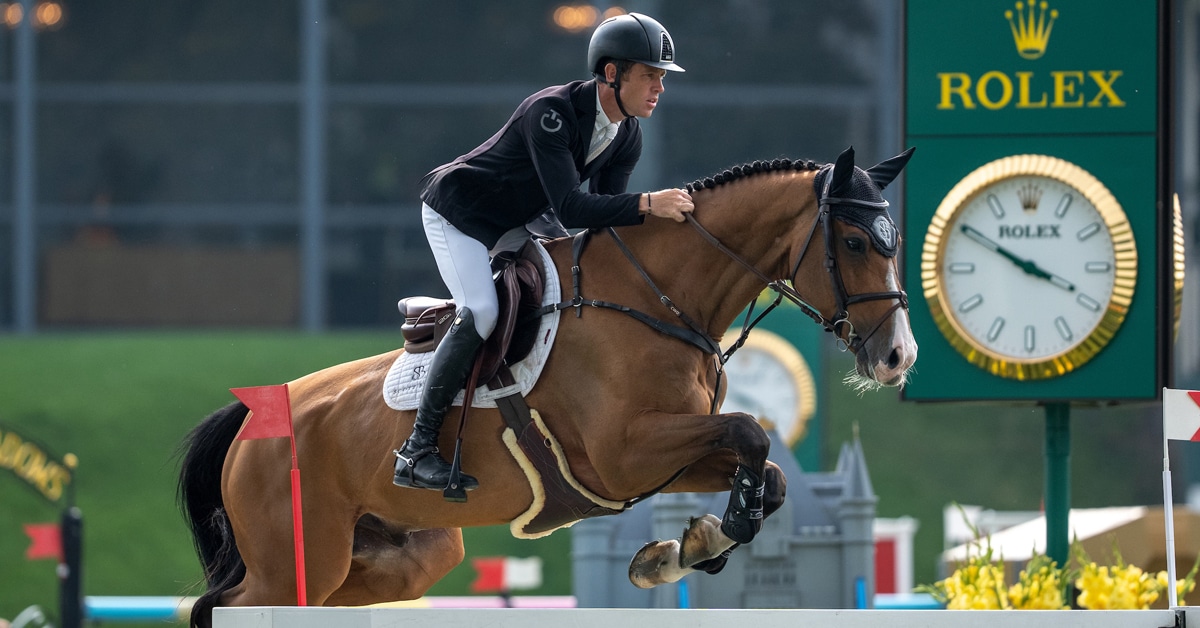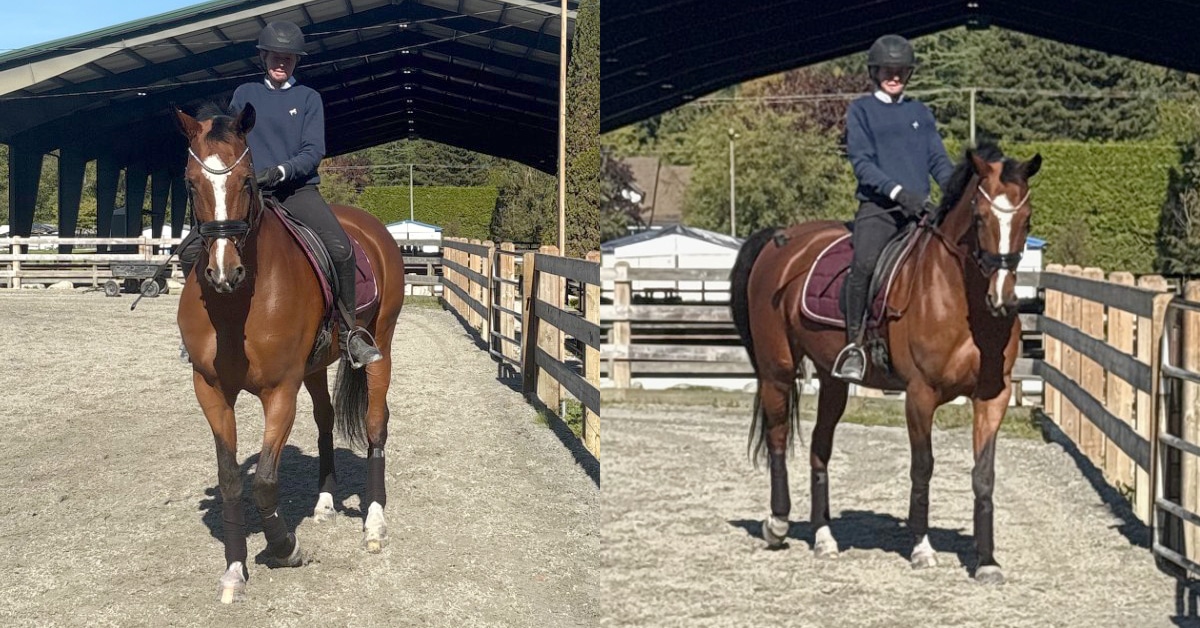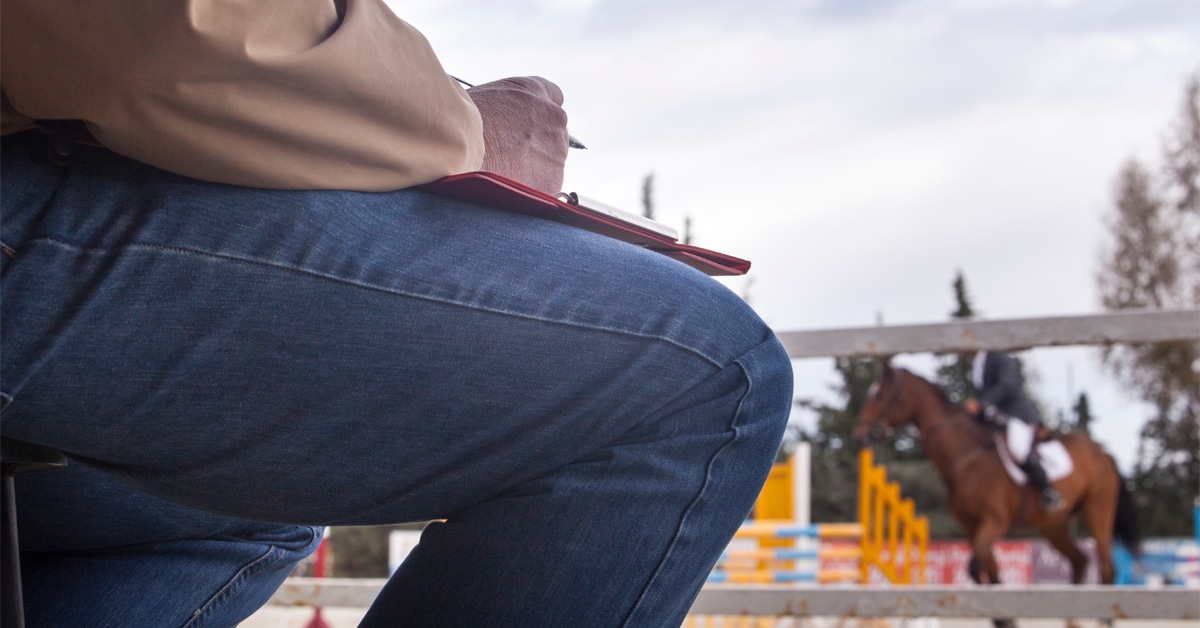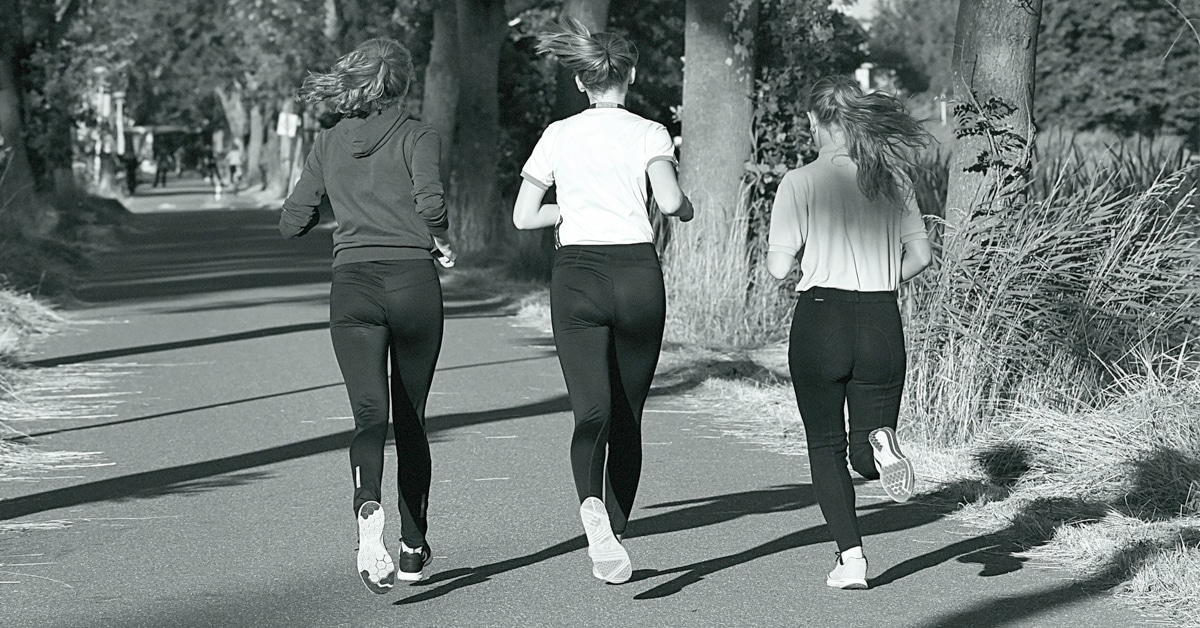As the show season gets going, our training priorities evolve into more concentrated preparation for competition. Over the course of the winter our horses had time to rest and recover from last season; then in the spring we have been able to focus on gymnastic exercises (see links below) as well as strength and cardio training.
With a few small schooling shows under our belt, we are easing into the full-on show season yet again. This means our training regime will shift focus again as we prioritize putting together the pieces, thinking about course management, and identifying some specific competition-related skills to address.
The following is a simple yet applicable exercise to bridge the gap between off-season training and competition preparation.
First, to set it up:
- The outside line is a combination set at 20’ then 66’ out of the line, and the oxer line is set to 55’ (increase to 22′, 69′ and 58’ if schooling outdoors). The one-stride is set at gymnastic distance, whereas the other lines are set on a relatively normal for indoor training 11’ stride basis.
The primary goal is to establish a bit of flow around the pattern with some true show course elements. Each line can be ridden both ways, as with the diagonal jumps, and if your indoor arena or outside ring is big enough to allow for it, there is a bending line option between the diagonal jumps to practice smooth steering, focusing on the landing line (i.e. trajectory away from the jump), and an opportunity to practice an opening rein over the jump.
Simply put, you can have this course go on and on as long as you like. We set our vertical gymnastic short out of the turn as well to increase the difficulty level – riding combination-to-vertical requires the horse and rider to make the necessary adjustment to get up the line without losing composure and keeping the ‘coil’ in the canter, while riding it the other way focuses on timing the collection and shortening of stride just in time for the short combination.
An oxer-to-oxer line is always a good test to make sure the horse carries impulsion in the gallop without letting the stretch across the oxers affect its internal balance and intention too much.
We like to use the tall X-rails on a lot of our jumps to help with straightness and to direct focus and attention to the centre of the jump without needing to use active riding aids.
***

Holly Grayton is the head trainer, coach and senior VP of Grayton Farms in Calgary, AB.
For previous articles in the ‘Jumping Lessons’ series, check out:
One Exercise, Four Trainers, Four Ways
Advanced Bounce Grid Exercises
Landing Rails For Better Striding
The Latest
